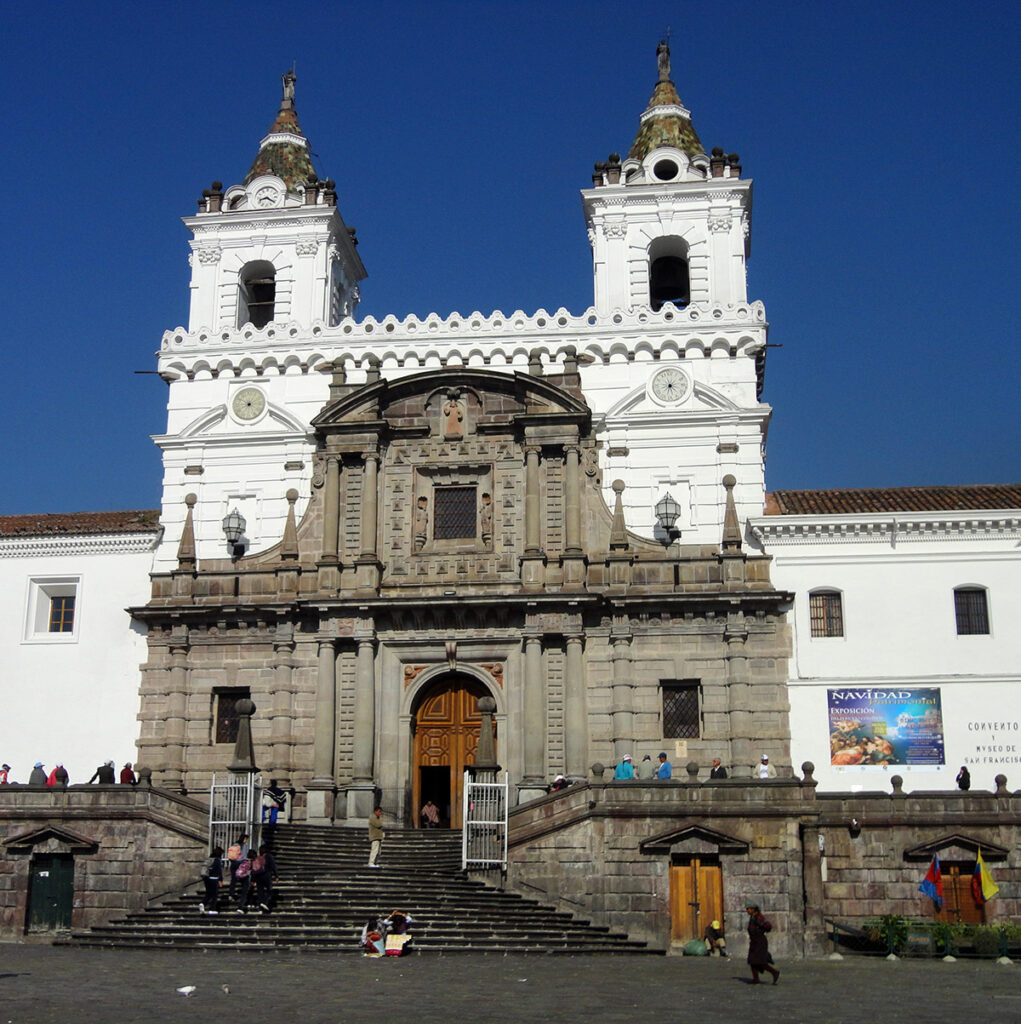Best Time to Visit Ecuador: Planning Your Trip
Best Time to Visit Ecuador: Planning Your Trip
Ecuador is a destination that captivates travelers with its extraordinary diversity and compact size, offering an unparalleled variety of experiences in a single trip. From the towering peaks of the Andes to the lush Amazon rainforest, and from the sun-soaked beaches of the Pacific Coast to the world-renowned Galápagos Islands, Ecuador is a land where nature, culture, and adventure converge. Rich in history and home to vibrant indigenous traditions, colonial cities like Quito and Cuenca provide a glimpse into the country’s past, while its thriving biodiversity offers endless opportunities for outdoor exploration. Whether you’re a nature enthusiast, adventure seeker, or cultural explorer, Ecuador promises unforgettable experiences for every type of traveler.
Best time to visit Ecuador by region
Ecuador, with its diverse ecosystems, experiences two main seasons: a wet season from October to May and a dry season from June to September. Thanks to its location on the equator, the country enjoys relatively stable and mild temperatures year-round. The best time to visit depends on the activities you want to pursue.
However, Ecuador’s distinct regions—Sierra, Coast, Amazon rainforest, and the Galápagos Islands—experience subtle seasonal shifts and different climates. In the end, there is no one best time to visit Ecuador, as the four regions always have their own weather pattern and therefore overlap.
December to February is perfect for coastal adventures in Ecuador. The Pacific Coast and Galápagos Islands enjoy warm days, light rain, and great underwater visibility for snorkeling or scuba diving. It’s also peak wildlife season, with species like giant tortoises, birds, and sea lions in their breeding, nesting, and hatching periods. Surfers benefit from ideal conditions, with winter swells from the north providing great waves.
In the Andes, the weather ranges from chilly to mild. Usually it doesn’t have rain all day, so this is still a great time to visit Ecuador. Most days will begin with clear skies and sunshine, with potential rain showers in the afternoon.
The Amazon is relatively drier, making trail exploration easier. However, water transportation in the Oriente can be affected by reduced rainfall.
With holiday festivities as Carnival and school breaks in Ecuador, this period is also a busy tourist season on the coast
March to May is an ideal time for an Amazon getaway. The Coast and Galápagos continue to offer great conditions for surfing and snorkeling, with plenty of wildlife, including iguanas and the famous blue-footed boobies during their hatching and mating season.
In the highlands, rain starts in late February and peaks in April, the rainiest month. Despite the downpours, Holy Week celebrations carry on in full swing. The Amazon rainforest flourishes during this period, offering lush landscapes and better wildlife sightings, though you’ll need rain gear and insect repellent.
Prices for flights and accommodations can rise with major holidays like Holy Week, Labor Day (and the Battle of Pichincha (May 24). If visiting the coast, book ahead, as many Ecuadorians vacation there during this time.
From June to September discover the wonders of Ecuador’s highlands, when sunny days and clear skies make the Andean region a top destination for both local and international travelers. This is the perfect time for hiking trips in the breathtaking Andes and participating in vibrant cultural festivals. Though the influx of tourists may raise prices, the experience is well worth it—just be sure to book accommodations and tours in advance.
Adventure seekers can also witness the arrival of humpback whales on Ecuador’s coast. From June to September, these giants gather near Puerto López for their breeding season, offering unforgettable whale-watching experiences.
October and November are ideal for off-peak travel in Ecuador. This shoulder season offers a quieter experience, with fewer crowds and reduced prices. The Amazon region sees milder rain, making it a great time for rainforest exploration without the risk of heavy flooding.
On the Coast and in the Galápagos, mornings may be misty, but warmer days are on the horizon. In the highlands, temperatures cool down with light rain and chilly nights. October marks the arrival of northern winds known as the Lash of St. Francis, expected to bring especially thunderstorms to Quito around October 4.
Though hiking and outdoor adventures remain possible despite some rain, November brings two major holidays: Día de los Difuntos (Day of the Dead) on November 2, and Cuenca’s Independence on November 3. These holidays make for busy travel periods across the country, so be prepared for a long weekend and full festivities.
Best time to visit the highlands
The dry season, generally from June to September, is considered by many to be the “ideal” time to travel to Ecuador. In the highlands, these months offer clear skies that are perfect for hiking but often bringing strong winds. The Highlands of Ecuador experience a subtropical highland climate, resulting in spring-like weather year-round. Daily temperatures typically range from 60 to 75°F (19-25°C), while nighttime temperatures hover around 50°F (10°C).
The dry season, from May to October, is ideal for hiking in the Andes Highlands. July and August can be very windy, so always take in consideration the chill factor higher up.
Occasional rain is manageable, but consistent rainfall can make hiking less enjoyable and more hazardous from February to April.
Nights and mornings at high altitudes can be quite cold, with occasional snow or hail, so it’s wise to pack warm layers and cold-weather gear.
To avoid crowds during the peak season of June to August, consider hiking during the shoulder months. May, as well as September through December, are excellent alternatives for a quieter experience.
Best Time to Climb Cotopaxi, Cayambe or Chimborazo
The best time to climb the snowcapped volcanos is during Ecuador’s dry seasons, from May to August and November to February, when weather conditions are most favorable for a successful ascent. However, keep in mind that the weather on the high mountains can be unpredictable, so it’s essential to stay informed about current conditions and be prepared for sudden changes.
Best time to visit Quito
If you’re wondering about the best time to visit Quito, the answer is: any time of the year! Situated at 2,800 meters (9,186 feet) above sea level, and just a short distance from the equator, Quito enjoys mild weather year-round. Quito is known for its unpredictable weather. A sunny morning can quickly turn into an afternoon downpour. Quito has two main seasons: the dry season from June to September and the rainy season from October to May. The ideal time to visit is between August and September when the weather is slightly warmer and there’s less chance of rain.
Best time to visit the Amazon
The Ecuadorian Amazon is a fantastic destination to visit at any time of the year, with weather that stays fairly consistent month to month. While you’ll encounter rain—it is the rainforest, after all—you can also expect plenty of sunshine. The average temperature is around 82°F (28°C), but nights can be cooler. Given Ecuador’s location on the equator, the region doesn’t experience extreme seasonal changes, apart from wetter and drier periods.
Rainy Season (January to June): During the rainy season, temperatures range between 73°F (23°C) and 86°F (30°C), with frequent downpours, particularly from April to mid-June. Floods may occur, and road closures are more possible. Wildlife is also harder to find while they are seeking shelter from the rain. But the wet season brings its own advantages: many plants bloom and bear fruit, which in turn attracts birds and primates, making wildlife sightings more common.
Dry Season (July to November): In the dry season, temperatures can climb higher, ranging from 78°F (26°C) to 104°F (40°C). While there’s less rain, occasional showers still occur. As water levels drop, you’ll see more beaches appear, drawing unique wildlife like beach-nesting birds that are harder to spot during the rainy months. Each season offers its own unique experiences, making the Amazon an enticing place to explore no matter when you go.
Best time to visit Guayaquil and the coast
The climate of the coastal region of Ecuador “is characterized by a tropical arid climate to the southwest, dry to humid towards the center-south and very humid to the north, in the Chocó area. For beach lovers, the prime time to enjoy Ecuador’s beaches along the Pacific Ocean is during the rainy season, from December to April or May. Despite its name, this season actually brings sunnier weather, with rain typically falling in short, intermittent bursts in the afternoons and the water is warmer.
The dry season, lasting from June to November or December, is marked by cooler temperatures and very little rainfall. But the coast may be shrouded in Garúa mist. While sea temperatures drop slightly, it’s never too cold for swimming, making the coast enjoyable year-round. From June to October each year, the shores of Ecuador welcome the majestic humpback whales, who migrate from the Antarctic to mate and breed in the warm waters of Puerto Lopez.
Best time to visit Guayaquil
Guayaquil is best visited outside of the rainy season which is January until April where the city is very hot and humid. The dry season, also known as the “garúa” season, typically lasts from June to December. During this time, Guayaquil experiences less rainfall and cooler temperatures, making it a pleasant time to visit.
Best time to visit the Galapagos Islands
For warmer weather and calm seas, visit the Galapagos between December and May; for cooler temperatures and increased marine life activity, June to November is ideal. Regardless of when you go, the Galapagos Islands offer year-round opportunities to explore, with abundant wildlife present throughout the year. The hot season (January to June) brings humid weather, warmer waters for snorkeling, and lush flora, while the dry season (June to December) offers cooler temperatures, nutrient-rich waters from the Humboldt Current, and more marine activity, making each season uniquely special for visitors. Transition periods in December and June bring noticeable changes in sea currents and vegetation.
Please check our extensive blog Best time to visit the Galapagos Islands https://ecuador.latitud0.com/best-time-to-visit-the-galapagos-islands/

